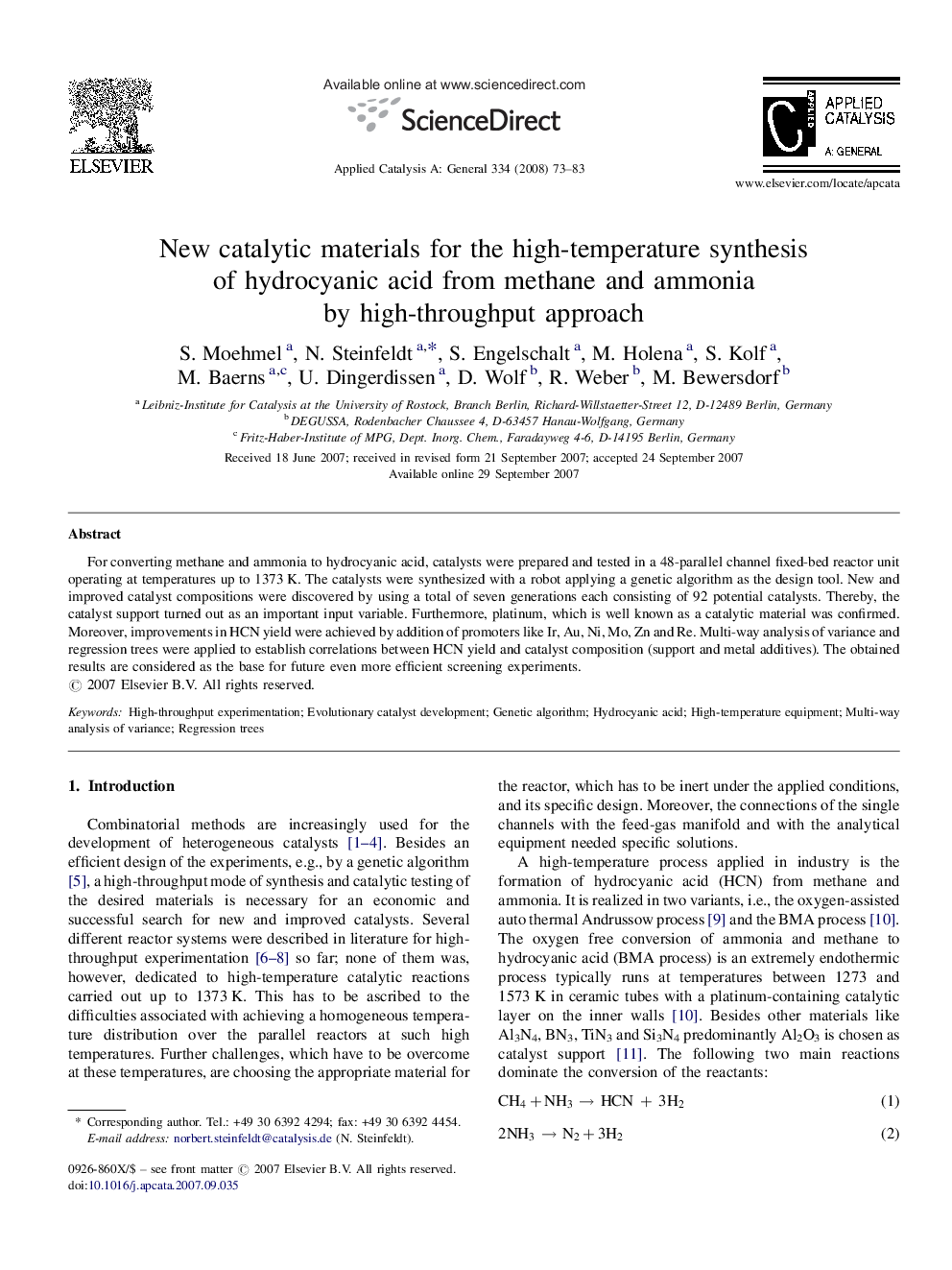| Article ID | Journal | Published Year | Pages | File Type |
|---|---|---|---|---|
| 43193 | Applied Catalysis A: General | 2008 | 11 Pages |
For converting methane and ammonia to hydrocyanic acid, catalysts were prepared and tested in a 48-parallel channel fixed-bed reactor unit operating at temperatures up to 1373 K. The catalysts were synthesized with a robot applying a genetic algorithm as the design tool. New and improved catalyst compositions were discovered by using a total of seven generations each consisting of 92 potential catalysts. Thereby, the catalyst support turned out as an important input variable. Furthermore, platinum, which is well known as a catalytic material was confirmed. Moreover, improvements in HCN yield were achieved by addition of promoters like Ir, Au, Ni, Mo, Zn and Re. Multi-way analysis of variance and regression trees were applied to establish correlations between HCN yield and catalyst composition (support and metal additives). The obtained results are considered as the base for future even more efficient screening experiments.
Graphical abstractFor converting methane and ammonia to hydrocyanic acid, improved catalyst formulations were obtained using high-throughput experimentation (preparation and testing) and a genetic algorithm as design tool. Furthermore, multi-way analysis of variance and regression trees were applied to establish correlations between HCN yield and catalyst composition.Figure optionsDownload full-size imageDownload as PowerPoint slide
